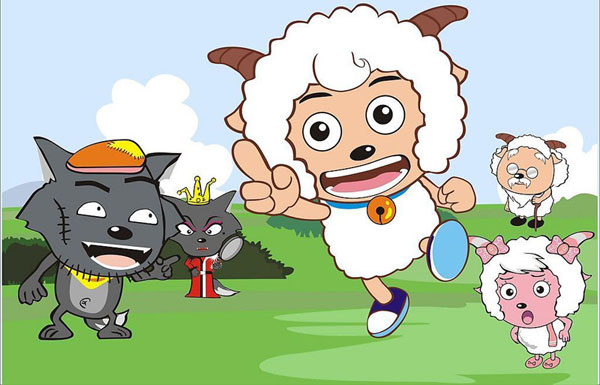Animation industry in China lacks creativity
 0 Comment(s)
0 Comment(s) Print
Print E-mail CRI, June 5, 2014
E-mail CRI, June 5, 2014
They may be increasing in quantity but according to industry experts, Chinese animation has seen very little improvement in quality in recent years.
 |
|
"Pleasant Goat and Big Big Wolf" in 2005 [File photo] |
They criticized the Children's entertainment industry to be too simplistic and lacks creativity and innovation.
Children's entertainment should not only be adored by young children but should be enjoyable for the whole family. That's the motto that many creators and animators of children's movies and TV shows try to emulate.
With twenty thousand minutes of film every year, China has seen an expansion in the market for animated film over the last few years. However, as the number of films produced has increased, the quality of Chinese animation has been criticized by industry experts and the viewers.
Recently, movie director Yan Yongqi said that children's entertainment in China suffers from a lack of creativity. His sentiment is shared by many others. Sun Lijun, the head of the School of Animation at the Beijing Film Academy, says the best animated film was made from a series of watercolor drawings in 1961.
"The film is about a tadpole finding its mother. It tells the story from the birth of the tadpole, with only its tail to becoming a fully-grown frog. In the process of finding its mother, the tadpole was introduced to many animals with and without tails along the way."
According to Sun Lijun, many kids have learned about animals and wildlife through this simple cartoon story. He says movies and TV shows must serve as a bridge from children's home life to the outside the world. Unfortunately, many of them fails to meet these expectations.
In recent years, the animation industry has made several changes to the production process. It usually took years to produce a feature length movie. But now, it only takes several weeks. According to Sun, China is current on even keel with Americans and the Japanese in techniques. But, while the technical aspects of animation have improved over the years, storytelling in today's children's entertainment has become stagnant.
"Although our techniques have developed rapidly, we are still far behind America and other countries in innovation, story writing and selection and creativity. Aside from the story, we need to improve our art design and the value of our products."
This has proven to be difficult with pressure from the market.
"The market doesn't wait for people. Animators don't have the luxury of taking years to produce a masterpiece. Secondly, investments are very scattered. Animation companies usually don't have enough money to produce something on a large scale. Investors still see it as just a product instead of a representation of our culture."
The lack of respect for intellectual properties is a major issue that is plaguing the animation industry. The large numbers of piracy cases has discouraged many talented animators from working in the industry. Instead, they have given up on their passion to pursue jobs in other areas such as gaming.
Sun also stresses that over-marketing is also another factor in the lack of interest in Chinese animation. He points out that in Hollywood and Disney, the amount of money spent on production is the equivalent of the amount of money spent on the global marketing of the movies. But, in China, the cost of marketing far outweighs the cost to make the movie.
"We have a saying in the industry that good things shouldn't be hidden away in deep alleys. Today, both the good and the bad are marketed to consumers. So when the buyers receive a bad product or in this case, watch a bad movie, they lose faith in the industry."
Even though it seems that China's animation industry is falling behind in the international market, Sun still believes that this country is on its way to producing high-quality animated film to compete with foreign productions.
"There are many positive developments in this industry. First, a lot of university students have shown interest in animation. Secondly, there are more genres of animated shows for different age groups whereas before, it's aimed at pre-school children. And we can't say all animations are going under, there are some excellent products out there."
So if the focus shifts from techniques to creativity, it looks like China's animation industry may still have a promising future.






Go to Forum >>0 Comment(s)